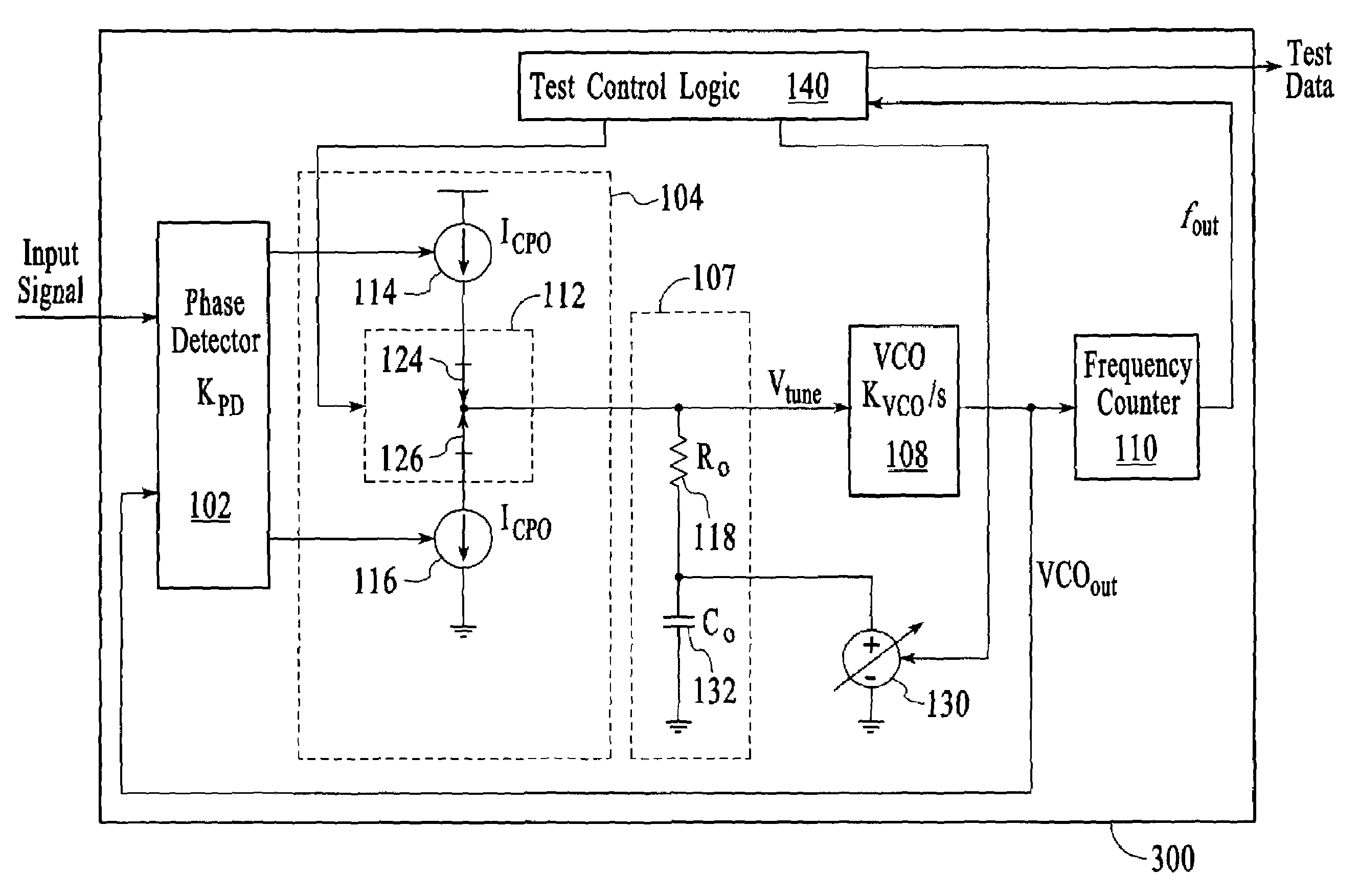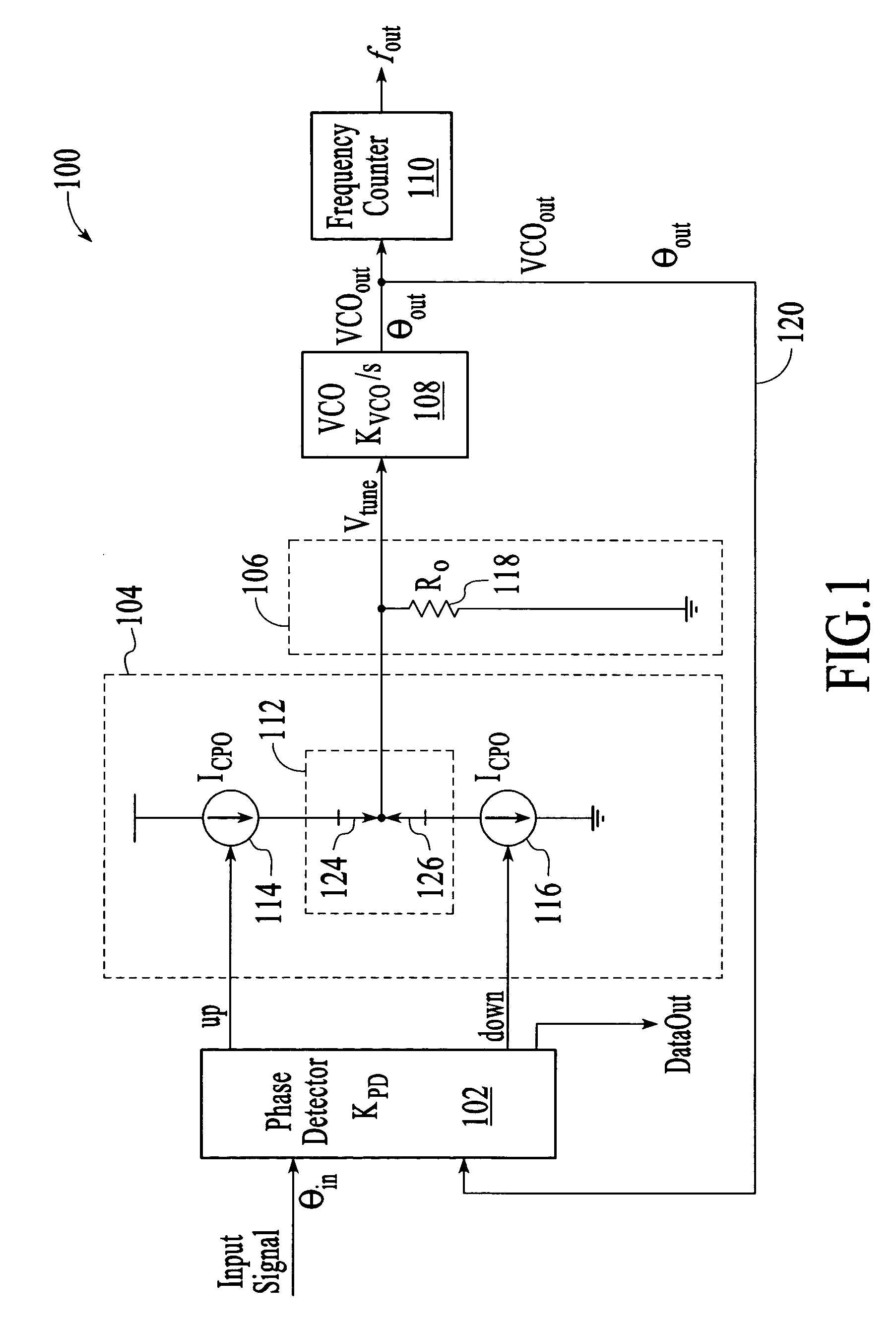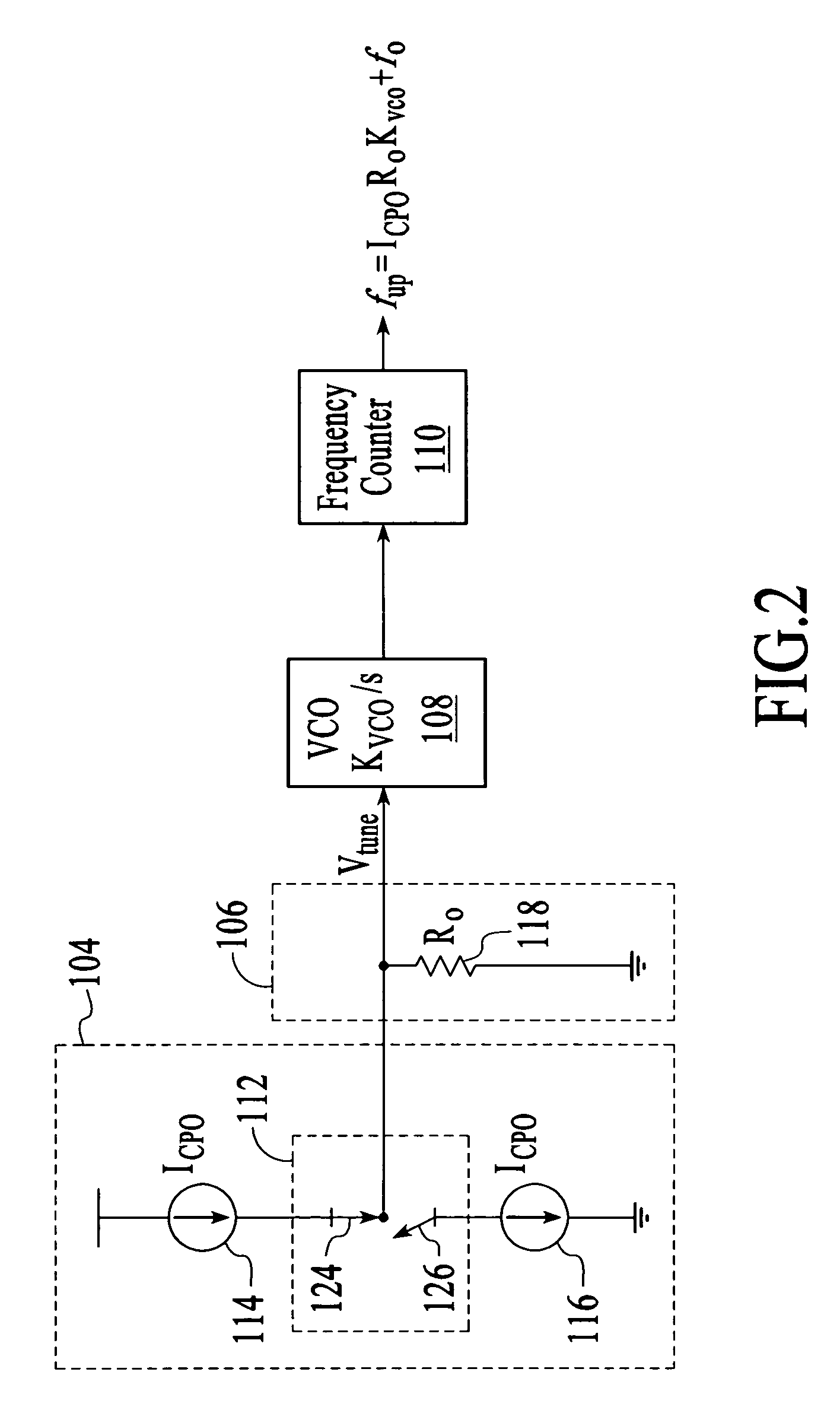Measuring the 3 dB frequency bandwidth of a phase-locked loop
a phase-locked loop and frequency bandwidth technology, applied in the direction of pulse automatic control, electric devices, etc., to achieve the effect of simple testing procedures, simple and less expensive components
- Summary
- Abstract
- Description
- Claims
- Application Information
AI Technical Summary
Benefits of technology
Problems solved by technology
Method used
Image
Examples
Embodiment Construction
[0018]The task of a phase-locked loop (PLL) is to lock the phase and frequency of a voltage controlled oscillator (VCO) signal to a particular signal, referred to herein as an input signal. In accordance with the invention, the 3 dB frequency bandwidth of a PLL is determined by measuring the frequency of the VCO signal when an up charging current is applied, measuring the frequency of the VCO signal when a down charging current is applied, and then using the two frequency measurements to calculate the 3 dB frequency bandwidth of the PLL.
[0019]FIG. 1 depicts an embodiment of a first order PLL 100 that includes a phase detector 102, a charge pump 104, a loop filter 106, and a VCO 108. FIG. 1 also depicts a frequency counter 110 and a charge current switch system 112 that support the measurement of the 3 dB frequency bandwidth of the PLL. The frequency counter and charge current switch system are described in more detail below after a description of the PLL components and operation.
[00...
PUM
 Login to View More
Login to View More Abstract
Description
Claims
Application Information
 Login to View More
Login to View More - R&D
- Intellectual Property
- Life Sciences
- Materials
- Tech Scout
- Unparalleled Data Quality
- Higher Quality Content
- 60% Fewer Hallucinations
Browse by: Latest US Patents, China's latest patents, Technical Efficacy Thesaurus, Application Domain, Technology Topic, Popular Technical Reports.
© 2025 PatSnap. All rights reserved.Legal|Privacy policy|Modern Slavery Act Transparency Statement|Sitemap|About US| Contact US: help@patsnap.com



